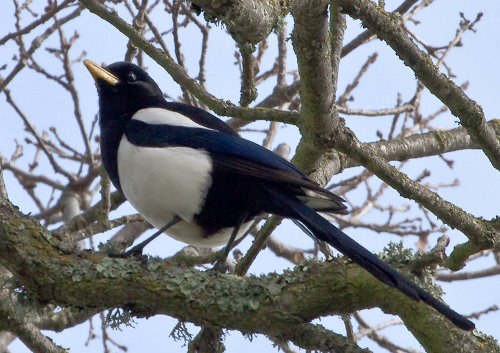
As the days get warmer, many of us start migrating from our homes to our backyards and other outdoor areas. Migrating birds are also on the move – like us, spurred to change their behavior by warmer temperatures.
Birds that overwinter in the Central Valley and other areas in California, like the tundra swan and sandhill crane, will soon be flying north for the summer to their breeding grounds in Canada, Alaska and the northern United States.
One species that won’t be making its usual trip north for summer is the Pacific brant. This black and white sea goose is slightly smaller than a Canada goose. Normally, right about now, the population wintering in Mexico would be getting ready to migrate to its summer breeding grounds in Alaska.
Recently, however, US Geological Survey-led study found an increasing number of Pacific brants are opting to stay put in Alaska year-round.
In the past, nearly the entire population – 90 percent – migrated from Alaska to Mexico for the winter, with the rest scattered along the Pacific coast, but last year, as many as 30 percent of the population spent its winter in Alaska.
In actual numbers, fewer than 3,000 Pacific brants were detected wintering in Alaska before 1977. Now, as many as 40,000 are wintering there.
Authors of the USGS study point to climate change as the primary reason for Alaska’s growing winter population of brants. They conclude that climate change is affecting Pacific brants in at least two significant ways: higher air and water temperatures have decreased coastal sea ice, giving the birds year-round access to eelgrass, which is their primary food.
Additionally, a changing wind regime has made it harder for them to migrate out of Alaska. The northerly winds they rely upon to aid their 3,000 mile-long journey to Mexico are becoming rarer. Researchers found that the increase in the number of brants wintering in Alaska was clearly linked to fewer days with favorable southward wind flow.
Although not having to migrate may seem like a benefit, this change leaves an increasing proportion of the Pacific brant population at risk.
Mild winters in Alaska may suddenly become bitterly cold for a period of time, a scenario that may become more common if, as some climatologists predict, climate change will cause more extreme and unpredictable weather.
“Alaska now has the greatest concentration of Pacific brant outside of Mexico. Because of this, threats to the Alaska wintering population can affect the entire Pacific Flyway population,” said David Ward, lead author of the study.
In other words, even though they are adapting to new climate conditions, Pacific brants are still at risk, and their new migration pattern – or lack thereof – could end up killing them.
Pacific brants aren’t the only birds that are modifying long-established ranges. Last year, scientists at the National Audubon Society analyzed 40 years of data collected by citizens participating in the annual Christmas Bird Count. They found that nearly 60 percent of the 305 species counted are shifting their ranges northward by an average of 35 miles, and that more than 60 species moved in excess of 100 miles north.
In its report Audubon asserted that the findings provide new and powerful evidence that global warming is having a serious impact on natural systems.
Audubon California, a division of the National Audubon Society, issued its own report detailing the impact of climate change on native California bird species.
In it, the authors pointed out that while birds are well equipped to adapt to new conditions, they may be unable to respond to environmental changes of the magnitude they are likely to experience in the coming decades.
The researchers predicted that up to 110 of California’s 310 native birds may disappear from at least 25 percent of their current ranges within the next 90 years.
The authors cite two main causes for the possible declines.
First, since wildlife habitat in the state has been reduced in area and fragmented, it may not adequately buffer species, communities and whole ecosystems against climate change.
Second, the unprecedented rate at which climate variables are changing puts even more pressure on all species, and even birds may not be able to keep up.
This is bad news for birds, but even worse news for less-mobile species.
Let’s put a face on this phenomenon. A familiar, yellow-billed face.

Yellow-billed magpies are iconic birds of the Central Valley. Although they are a common sight around here, they are actually relatively rare in California and do not occur elsewhere.
Audubon California researchers found that this Central Valley resident could lose as much as 75 percent of its range, and could be pushed over the brink of extinction in the next 100 years if we do nothing to address global greenhouse gases.
However, if we aggressively reduce greenhouse gas emissions, yellow-billed magpies could lose as little as 9 percent of their range. Yet another reason to reduce your carbon footprint.
Katharine Moore is a resident of Davis. Tuleyome is a local nonprofit working to protect both our wild heritage and our agricultural heritage for future generations. Past “Tuleyome Tales” articles are available in the library section of their Web site, www.tuleyome.org .
Follow Lake County News on Twitter at http://twitter.com/LakeCoNews and on Facebook at http://www.facebook.com/pages/Lake-County-News/143156775604?ref=mf .

 How to resolve AdBlock issue?
How to resolve AdBlock issue? 





